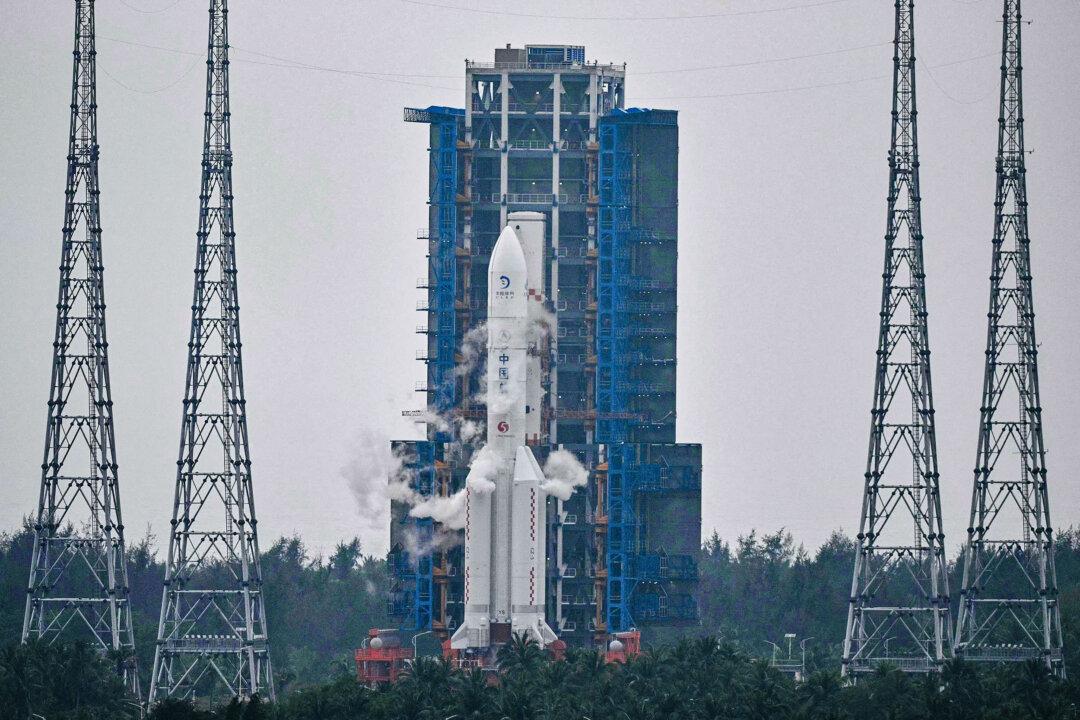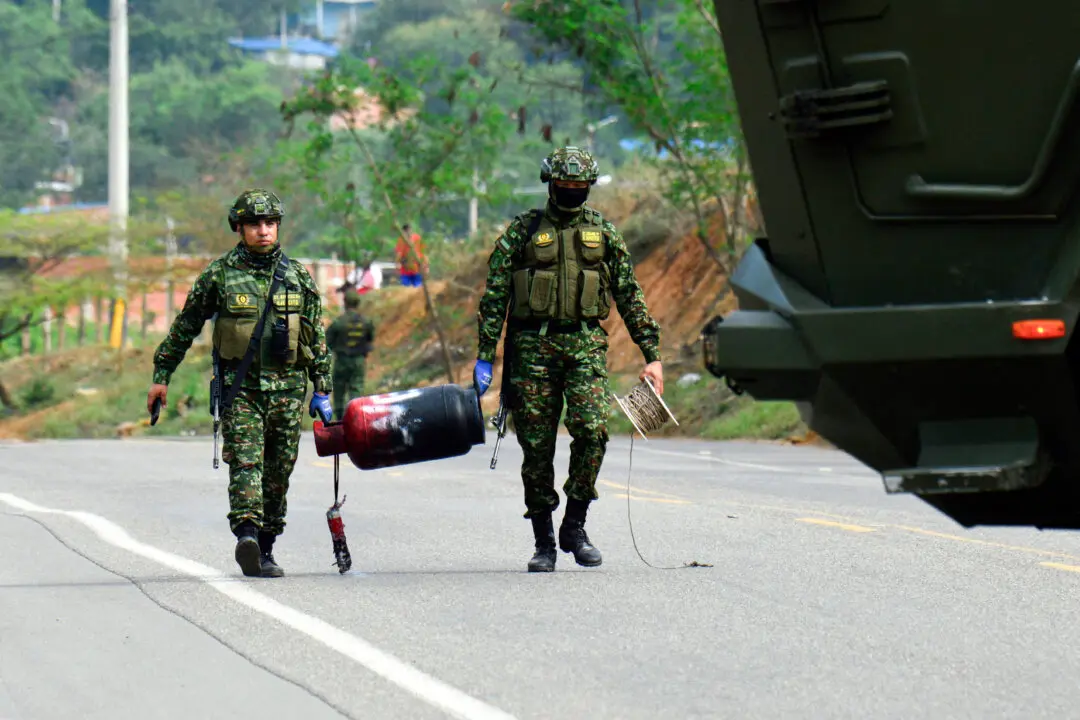Commentary
War in space between the United States and China is becoming more probable as Beijing ramps up its military capabilities in what was previously thought of as a no-go zone for military offensives.
The People’s Liberation Army (PLA) is now America’s most powerful adversary in space, with almost 500 intelligence, surveillance, and reconnaissance (ISR) satellites. Many are reportedly dual-purpose commercial satellites. Half of China’s ISR satellites were added in 2023. These capabilities allow the PLA Aerospace Force to detect, track, and use satellite targeting data to attack U.S. forces with missiles. By comparison, the United States has about 300 dedicated military or intelligence satellites out of a total of almost 7,000 satellites, most of which are commercial.
American soldiers, sailors, and airmen on our largest military platforms, including aircraft carriers, military bases, and large air force formations, are the most vulnerable. The U.S. economy, which depends upon satellite communications, could also be targeted to make everything from GPS to emergency internet services go dark.
The PLA demonstrated its anti-satellite capabilities as early as 2007. It can now destroy, capture, or move off-orbit satellites upon which the U.S. military, intelligence, and general public rely. The PLA is developing ground-based and considering submarine-based weapons—likely lasers—to disable U.S. satellites up to 22,000 miles above Earth.
In a war over Taiwan, the most likely U.S.–China flashpoint, the PLA could be building toward a surprise attack on U.S. satellites that would degrade the U.S. military’s global communications, surveillance, and targeting capabilities. Protecting those satellites from the PLA, not to mention Russian aggression, is becoming increasingly critical. In 2022, Russia tested components for a nuclear weapon in space that could destroy many satellites with a single explosion. A combined Russian–Chinese first strike in space could blind and potentially sideline most of the U.S. military in any upcoming fight.
America’s tip of the spear in space is the U.S. Space Command (USSPACECOM) founded by then-President Ronald Reagan in 1985, and the U.S. Space Force (USSF) founded by then-President Donald Trump in 2019. USSPACECOM is a leadership structure focused on coordinating joint military forces in space warfighting, including not only the USSF but also warfighting units focused on space from the Air Force, Navy, Army, Marines, and joint missile defense forces. The USSF is for training, equipping, and operating additional space forces as necessary for space warfighting under the ultimate wartime command of USSPACECOM.
The USSF is small compared to other services, with just 15,000 personnel, called “Guardians,” and a $29 billion budget request for 2025. That’s likely too small compared to the total $850 billion defense budget request as a whole. The Mitchell Institute has advocated an increase to the USSF budget of $250 million per year and an end goal of 200 additional personnel necessary for the defense of the moon and the cislunar region, which is the space between the Earth and the moon. Space capabilities at other services are also likely underfunded, given the importance of the space mission at the earliest stages of any major military conflict.
If the PLA plans on attacking Taiwan by 2027, which it has been tasked to be ready for, and it fears U.S. military intervention, which President Joe Biden repeatedly said he would do, then the PLA will likely want to blind U.S. military satellites beforehand so they cannot target Chinese bombers, missiles, and an amphibious fleet as they speed across the Taiwan Strait.
The U.S. defense of vulnerable U.S. satellites, likely including disabling offensive Chinese space assets, shows just how destabilizing are Beijing’s plans for a Taiwan invasion. Before it even takes place, the United States and China could be fighting in space because whoever strikes first in space has the advantage in not just space but also any ground, air, or naval war that follows. To avoid that awful outcome, Beijing and Moscow should immediately back away from their aggression against Taiwan and Ukraine. But unfortunately, that does not seem to be in the cards at this time.
Both the United States and China have launched military space planes, with the first X-37 flight in 2010. The PLA launched its first Shenlong reusable space plane on Dec. 14, 2023. Both planes are conducting highly secret operations.
The USSF has argued for offensive space capabilities known as “space fires” that will avoid creating debris fields that could damage our own satellites. Space fires could include laser, microwave, particle beam, cyber, or nonexplosive kinetic options such as satellites or space planes that capture, move, or electronically disable adversary satellites. The USSF has also promoted redundancy in U.S. military and intelligence satellites, meaning that we have so many that if some are taken out, others can fill in.
To protect ourselves and our allies, the USSF and other USSPACECOM warfighting units need to be able to rapidly achieve space superiority in any pending war with China or Russia, including through preemptive space fires. This provides deterrence against these adversaries, which keeps the peace.
Peace in space through strength in space is not cheap, however. It requires more funding—not necessarily from the U.S. taxpayer—sufficient to protect our space assets and deter the enemy from launching strikes in the first place.





